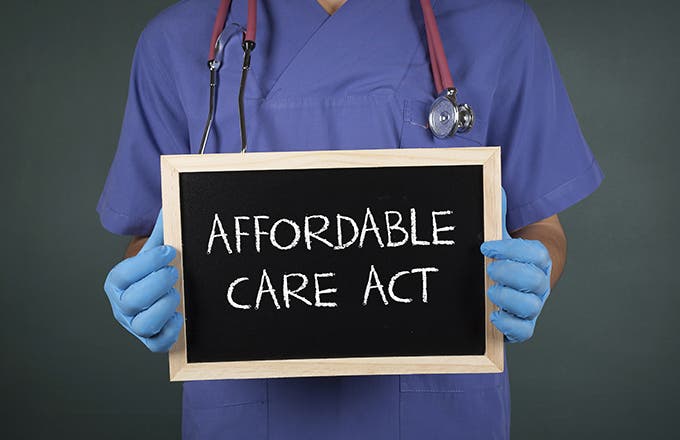When the Affordable Care Act went
into full effect this year, it gave uninsured Americans a powerful
incentive to go out and obtain a health policy: a fee if they didn’t
comply. And while the penalty was relatively mild in 2014, it’s only
going to increase starting in 2015. As a result, many individuals who
never thought they could afford health insurance are being pushed into
the marketplace.
There is some good news for those on a budget, however. The ACA provides more insurance options than before. And those on the lower end of the income scale qualify for subsidies that make premiums a lot more manageable.
If you’re one of the many Americans looking for insurance on their own because they don’t get coverage through work, here’s what you need to know to keep your payments as low as possible.
See if you can get a subsidy
If you’re buying an individual health care plan, you can either do so the old-fashioned way – purchasing it directly from a carrier – or shop policies on your state’s health insurance exchange. An exchange, or “marketplace,” is comprised of private insurers who must offer standardized plans for individuals, families and small businesses.
From a cost perspective, going through this marketplace is a double-edged sword. Because the government sets minimum standards for what’s covered under these plans, their sticker price is sometimes higher than plans sold outside the exchange. However, some consumers can get income-based tax credits if they use the marketplace. For that reason alone, it’s worth checking them out when you go looking for a policy.
To obtain a subsidy as an individual, you have to be a citizen or legal resident of the U.S. and earn less than 400% of the federal poverty level. Currently, that amounts to $46,680 or less per year for an individual and below $95,400 for a family of four. Once you go on the exchange website, you’ll be asked for your income and family size to determine your eligibility.
Decide if a basic plan fits your needs
One of the easiest ways to keep your monthly expenses in check is to choose a high-deductible health plan (HDHP). You’ll have lower premium, but also a lot more risk if something unforeseen should happen – they’re called high-deductible plans for a reason.
A nice benefit of HDHPs is that you can pair them with a health savings account,
which enables you to pay for out-of-pocket medical expenses using
pre-tax dollars. If you’re in the 15% income tax bracket, it’s like
getting a 15% discount on all the health-related charges you incur, from
doctor bills to eyeglasses.
If you’re even more daring, a so-called “catastrophic” plan might be worth a look. These offer bare-bones protection – you’re covered for three office visits a year – but saddle you with higher deductibles and co-insurance expenses. Not everyone qualifies, either. You have to be under 30 years of age or obtain a hardship exemption that demonstrates you were unable to afford coverage on the exchange.
See if you’re eligible for Medicaid
In its quest to increase the number of insured, the ACA created a minimum eligibility for Medicaid, the joint federal and state health care program for low-income residents. Now that threshold must be at least 133% of the national poverty level. That’s $15,521 a year for an individual and $31,720 for a family of four. If you’re historically in the middle class but your income has dropped recently – for example, you went part-time at work because you’re taking classes – you might just qualify. You’re chances are even higher if you live in a state that’s raised the income cut-off above the federal requirements.
Fortunately, determining your eligibility for Medicaid doesn’t require any extra work. The same application that you fill out to see if you can get a tax credit will tell you whether you’re entitled to Medicaid benefits.
Investigate parent’s plan
A lot of college graduates these days are having a tough time finding a full-time job with health insurance. However, the ACA is making it a lot easier for cash-strapped young adults to get coverage.
Now, individuals can join or stay on their parent’s plan until they turn 26. There are some restrictions here. You have to be single and living under your own roof. You also have to be financially independent and ineligible to obtain insurance through your employer’s plan.
The Bottom Line
One of the easiest ways to save money is to compare plans sold on an exchange and those sold directly through a carrier. But keep in mind that policies with lower premiums aren’t always the best deal if they mean dramatically higher deductibles and co-insurance.
There is some good news for those on a budget, however. The ACA provides more insurance options than before. And those on the lower end of the income scale qualify for subsidies that make premiums a lot more manageable.
If you’re one of the many Americans looking for insurance on their own because they don’t get coverage through work, here’s what you need to know to keep your payments as low as possible.
See if you can get a subsidy
If you’re buying an individual health care plan, you can either do so the old-fashioned way – purchasing it directly from a carrier – or shop policies on your state’s health insurance exchange. An exchange, or “marketplace,” is comprised of private insurers who must offer standardized plans for individuals, families and small businesses.
From a cost perspective, going through this marketplace is a double-edged sword. Because the government sets minimum standards for what’s covered under these plans, their sticker price is sometimes higher than plans sold outside the exchange. However, some consumers can get income-based tax credits if they use the marketplace. For that reason alone, it’s worth checking them out when you go looking for a policy.
To obtain a subsidy as an individual, you have to be a citizen or legal resident of the U.S. and earn less than 400% of the federal poverty level. Currently, that amounts to $46,680 or less per year for an individual and below $95,400 for a family of four. Once you go on the exchange website, you’ll be asked for your income and family size to determine your eligibility.
Decide if a basic plan fits your needs
One of the easiest ways to keep your monthly expenses in check is to choose a high-deductible health plan (HDHP). You’ll have lower premium, but also a lot more risk if something unforeseen should happen – they’re called high-deductible plans for a reason.
If you’re even more daring, a so-called “catastrophic” plan might be worth a look. These offer bare-bones protection – you’re covered for three office visits a year – but saddle you with higher deductibles and co-insurance expenses. Not everyone qualifies, either. You have to be under 30 years of age or obtain a hardship exemption that demonstrates you were unable to afford coverage on the exchange.
See if you’re eligible for Medicaid
In its quest to increase the number of insured, the ACA created a minimum eligibility for Medicaid, the joint federal and state health care program for low-income residents. Now that threshold must be at least 133% of the national poverty level. That’s $15,521 a year for an individual and $31,720 for a family of four. If you’re historically in the middle class but your income has dropped recently – for example, you went part-time at work because you’re taking classes – you might just qualify. You’re chances are even higher if you live in a state that’s raised the income cut-off above the federal requirements.
Fortunately, determining your eligibility for Medicaid doesn’t require any extra work. The same application that you fill out to see if you can get a tax credit will tell you whether you’re entitled to Medicaid benefits.
Investigate parent’s plan
A lot of college graduates these days are having a tough time finding a full-time job with health insurance. However, the ACA is making it a lot easier for cash-strapped young adults to get coverage.
Now, individuals can join or stay on their parent’s plan until they turn 26. There are some restrictions here. You have to be single and living under your own roof. You also have to be financially independent and ineligible to obtain insurance through your employer’s plan.
The Bottom Line
One of the easiest ways to save money is to compare plans sold on an exchange and those sold directly through a carrier. But keep in mind that policies with lower premiums aren’t always the best deal if they mean dramatically higher deductibles and co-insurance.
Let Insurance Be Your Peace of Mind
Do you know the 4 Types of Insurance Everyone Needs? Investopedia’s FREE Personal Finance newsletter provides the knowledge and information you need to make the best financial decisions. Click here to get this weekly guide and start learning how to prepare for life’s unexpected surprises.






